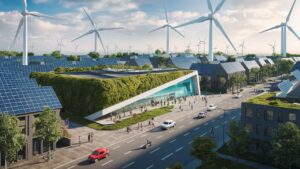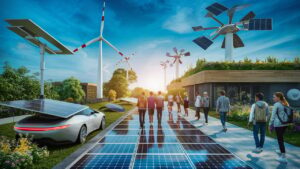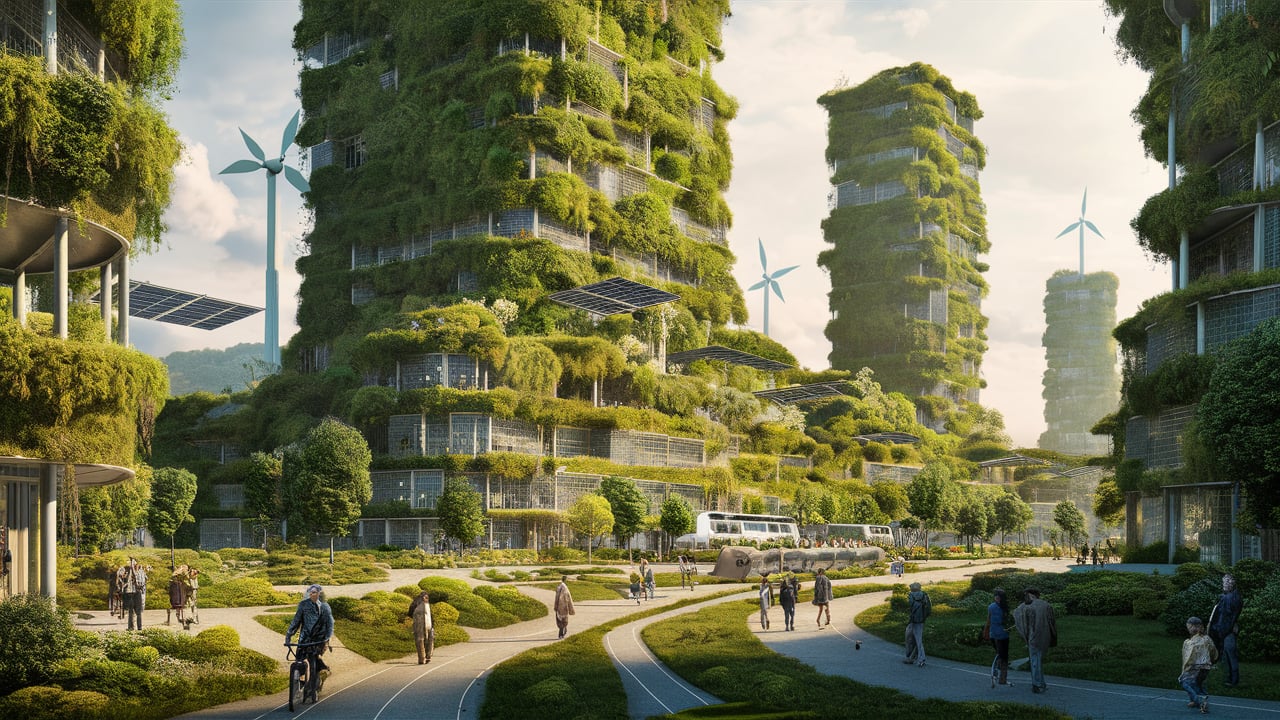Green Technology
As environmental concerns intensify, the world is turning to green technology to combat climate change, reduce carbon footprints, and foster sustainable development. Green technology, also known as environmental technology or clean technology, represents a range of innovations designed to conserve natural resources and reduce human environmental impact.
In this article, we’ll explore what green technology is, its importance, key sectors, benefits, and the latest trends shaping its future.
What is Green Technology?
Green technology refers to the application of science and innovation to create products, processes, or systems that are environmentally friendly. It includes both existing and emerging technologies that reduce or reverse environmental degradation. These technologies are crucial for achieving long-term sustainability and conserving resources for future generations.

Green tech solutions focus on minimizing the negative effects of human activity on the planet by leveraging renewable energy sources, energy-efficient systems, and sustainable materials. It spans several industries, including energy, construction, agriculture, transportation, and waste management.
Importance of Green Technology
- Climate Change Mitigation: Green technologies play a vital role in reducing greenhouse gas emissions, which are responsible for global warming. By using renewable energy, such as solar power, wind power, and hydropower, nations can decrease reliance on fossil fuels, significantly cutting emissions.
- Resource Conservation: Technologies like water recycling, energy-efficient appliances, and sustainable farming practices help in reducing the consumption of natural resources such as water, minerals, and fossil fuels.
- Improved Public Health: By reducing pollution, green technologies improve air and water quality, leading to healthier living conditions. Electric vehicles (EVs), for example, contribute to cleaner air by producing zero emissions compared to gasoline-powered cars.

- Economic Growth: Investing in green technology stimulates economic development by creating new industries, jobs, and markets focused on sustainability. Companies involved in clean energy production, green building materials, and sustainable agriculture are experiencing rapid growth.
- Energy Independence: Countries that adopt renewable energy can reduce their dependence on imported fossil fuels, ensuring energy security and stabilizing economies against fluctuating oil prices.
Key Sectors of Green Technology
Several sectors are rapidly evolving with the help of green technologies:
1. Renewable Energy
The renewable energy sector is at the heart of green technology. Clean energy solutions such as solar panels, wind turbines, geothermal systems, and bioenergy are revolutionizing how we generate power. These systems harness natural resources that are replenished naturally, reducing reliance on finite, polluting fossil fuels.
- Solar Energy: Solar photovoltaic (PV) cells convert sunlight into electricity. Solar farms and rooftop installations have become more common, providing affordable, clean energy for homes and businesses.
- Wind Energy: Wind turbines convert kinetic energy from wind into electricity. Offshore and onshore wind farms are becoming prevalent sources of renewable energy.
- Hydropower: Water flow from rivers or dams is used to generate electricity. While effective, hydropower is considered less scalable due to the environmental impact of dam construction.
2. Green Building
Green building or sustainable architecture involves designing and constructing structures with energy efficiency and environmental responsibility in mind. Key features include:
- Energy-efficient materials: These include insulation, windows, and materials that reduce the need for artificial heating and cooling.
- Sustainable design: Buildings incorporate natural lighting, ventilation, and solar energy, reducing energy consumption.
- Water conservation technologies: Low-flow plumbing fixtures, rainwater harvesting, and greywater recycling systems help in minimizing water waste.
3. Electric Vehicles (EVs)
The transportation sector is one of the largest contributors to greenhouse gas emissions. Electric vehicles are at the forefront of green technology in transportation, significantly reducing emissions and reliance on fossil fuels. EVs use electricity, typically from renewable sources, to power engines instead of gasoline.
- Battery innovations: Companies are continually improving lithium-ion batteries for longer ranges and quicker charging, addressing range anxiety and making EVs more accessible.
- Autonomous technology: Self-driving EVs are being designed to improve fuel efficiency and reduce traffic congestion, further decreasing environmental impact.

4. Sustainable Agriculture
Green technology in agriculture aims to enhance food production while minimizing environmental damage. This includes innovations in organic farming, hydroponics, precision agriculture, and vertical farming.
- Organic farming reduces the use of harmful pesticides and fertilizers, ensuring that food is grown naturally.
- Hydroponics and aquaponics use less water and space than traditional farming, making them ideal for urban environments.
- Precision agriculture involves using sensors, drones, and IoT devices to monitor crops and soil health, optimizing water and fertilizer usage.
5. Waste Management and Recycling
Effective waste management is a critical component of green technology. Innovations in this sector focus on reducing waste, promoting recycling, and converting waste into energy.
